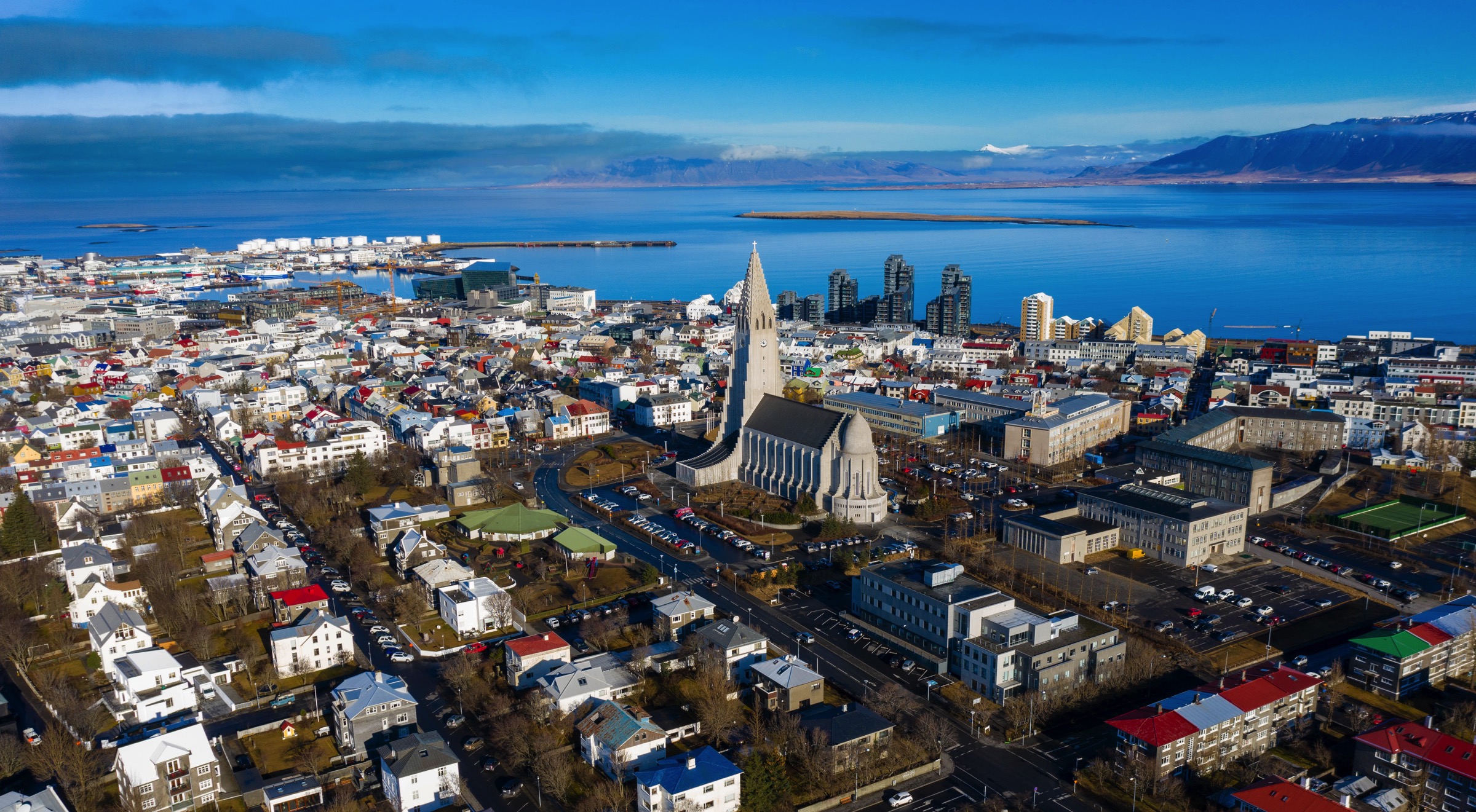Iceland is the only country in Europe that has not experienced war. This is due to its location, being an isolated island over 1400 kilometers northwest of Ireland and the UK.
The island was not discovered by the Vikings until the 9th century, although it was probably known before that date. From 874, it began to be populated, mainly by Norwegian settlers fleeing the conflicts of their country.
Source: https://en.wikipedia.org/wiki/History_of_l%27Iceland
More recently, since the 18th century, the Icelandic national dress for men has been similar to a British army sailor’s suit, made of wool and fitted with large round copper buttons, and including a knitted tuque, also made of wool. . This costume for men is the modified modern version of the traditional Icelandic costume and is called “hátíðarbúningur”. For women, it is a long dark, black or navy blue dress, decorated with multiple white or gold embroidery, covering the entire large collar surrounding the neck, and in two wide vertical bands connecting the neck to the waist, through the chest. The name of the traditional women’s dress is “faldbúningur” and the name of the traditional hat that is worn at the same time is “spaðafaldur“.

Impressions of UNESCO’s Intangible Cultural Heritage of Humanity
At the end of 2018, the UNESCO Intergovernmental Committee for the Safeguarding of the Intangible Cultural Heritage decided on the inclusion of block printing and indigo dyeing, known as Blaudruck/Modrotisk/Kékfestés/Modrotlač, which literally translates to “reserve blue printing”, è the international list of UNESCO, thus approving the request made by Austria, Czechia, Germany, Hungary and Slovakia.
Blaudruck came to Europe from Asia, precisely from the traditional indigo-dyeing countries of India, China, Indonesia and Japan. Thanks to the Dutch East India Company, founded in the 17th century, this technique was introduced to Central Europe. Initially, blue fabrics were particularly popular among the bourgeoisie, but gradually they spread to rural villages. During the 18th and 19th centuries, artisans from the region traveled abroad to learn the new technique, forming guilds and associations and documenting their routes in travel journals. This has resulted in a significant exchange of designs and models between practitioners.
Blaudruck products
The technique
As stated in the Convention for the Safeguarding of the Intangible Cultural Heritage, Blaudruck/Modrotisk/Kékfestés/Modrotlač, is a technique that refers to the practice of printing a dye-resistant paste onto a fabric before dyeing it with indigo. After immersion in the indigo tank, the areas of fabric under the printed pattern remain white or not dyed.
Fabric printing has evolved so much across regions and eras! Starting in Asia with wax printing (batik), it became “Blaudruck” or indigo dye printing, and then continued to evolve over time.
In 2022, it is possible to find several fabric printers in Iceland. Important photographers, designers or architects have left their mark on Icelandic culture, either since the beginning of this century, or sometimes are still present today.
Here are some personalities that deserve our attention:
- Kat Craats Photography: https://www.katcraats.com
- Spoonflower (488 results with keywords “Iceland” and “Fabric”): https://www.spoonflower.com
- Iceland’s HiddenWorld Textiles – COOL HUNTING: https://coolhunting.com